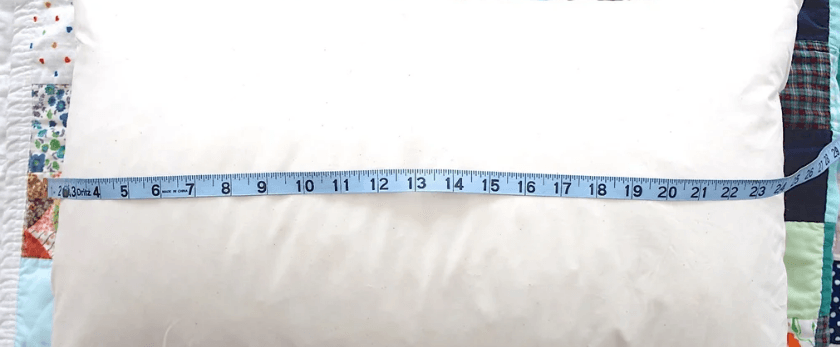Are you looking for ways to reduce your carbon footprint and live a more eco-friendly lifestyle? One simple and effective way to do so is by making your own pillows at home. Not only is it a fun and creative activity, but it also helps reduce waste and promotes sustainability. In this article, we will discuss why traditional pillows are bad for the environment, the benefits of making your own pillows, and provide a step-by-step guide on how to make your own homemade pillows.
Why Traditional Pillows are Bad for the Environment
Most traditional pillows are made from synthetic materials such as polyester, which is derived from non-renewable resources like petroleum. The production of these materials requires a significant amount of energy and emits harmful greenhouse gases into the atmosphere. Additionally, the manufacturing process also involves the use of toxic chemicals, which can be harmful to both the environment and our health.
Moreover, traditional pillows are often treated with flame retardants, which are known to be harmful to the environment and can cause health issues. These chemicals can leach into the soil and water, polluting our ecosystems and harming wildlife. When we dispose of these pillows, they end up in landfills, where they take hundreds of years to decompose, releasing more harmful chemicals into the environment.
Why Making Your Own Pillows is Better for the Environment
Making your own pillows is a simple and effective way to reduce your environmental impact. By using sustainable materials and avoiding harmful chemicals, you can create pillows that are not only better for the planet but also for your health. Here are some of the benefits of making your own pillows:
- Reduces waste: By making your own pillows, you can avoid contributing to the growing waste problem. You can use old fabrics or repurpose materials that would otherwise end up in landfills.
- Saves energy: The production of traditional pillows requires a significant amount of energy, which contributes to carbon emissions. By making your own pillows, you can reduce your carbon footprint and help combat climate change.
- Promotes sustainability: By using sustainable materials such as organic cotton, bamboo, or wool, you are supporting sustainable practices and reducing the demand for non-renewable resources.
- Customizable: Making your own pillows allows you to customize them according to your preferences, whether it's the size, shape, or filling. This not only adds a personal touch but also ensures that you have a comfortable and supportive pillow.
- Cost-effective: Making your own pillows can save you money in the long run. Instead of constantly buying new pillows, you can make them at a fraction of the cost and use materials that are readily available.

What You Will Need
Before we dive into the step-by-step guide, here are the materials you will need to make your own homemade pillows:
- Fabric of your choice (organic cotton, bamboo, wool, etc.)
- Scissors
- Sewing machine or needle and thread
- Measuring tape
- Pillow stuffing (organic cotton, wool, buckwheat hulls, etc.)
- Optional: Buttons, zippers, or other decorative materials
Step-by-Step Guide
Step 1: Measure and Cut the Fabric
The first step is to measure and cut the fabric according to the size and shape of the pillow you want to make. You can use an old pillow as a guide or create your own dimensions. Make sure to leave an extra inch on each side for seam allowance.
Step 2: Sew the Fabric Together
Place the two pieces of fabric together, with the right sides facing each other. Sew along three sides, leaving one side open for stuffing. You can use a sewing machine or hand sew using a simple running stitch.
Step 3: Turn the Pillowcase Inside Out
Once you have sewn three sides, turn the pillowcase inside out so that the right sides are now facing out.
Step 4: Stuff the Pillow
Now it's time to stuff your pillow with your chosen filling. You can use organic cotton, wool, buckwheat hulls, or any other natural and sustainable material. Make sure to stuff it evenly and to your desired level of firmness.
Step 5: Sew the Final Side
Once you have stuffed the pillow, sew the final side closed using a simple running stitch. Make sure to secure the stitches at the beginning and end.
Step 6: Optional: Add Decorative Elements
If you want to add some decorative elements to your pillow, now is the time to do so. You can sew on buttons, add a zipper, or use fabric paint to create a unique design.
Congratulations, you have now successfully made your own homemade pillow! You can repeat these steps to make as many pillows as you need, using different fabrics and fillings for each one.
Responsible Disposal of Old Pillows
Now that you have made your own sustainable pillows, it's important to dispose of your old pillows responsibly. Instead of throwing them in the trash, consider donating them to a local charity or shelter. You can also repurpose them for other household uses, such as pet beds or cushioning for moving fragile items.
Conclusion
Making your own pillows is a simple and effective way to reduce your environmental impact and promote sustainability. By using sustainable materials and avoiding harmful chemicals, you can create pillows that are better for the planet and your health. So why not give it a try and make your own homemade pillows today? Your planet and your wallet will thank you.










